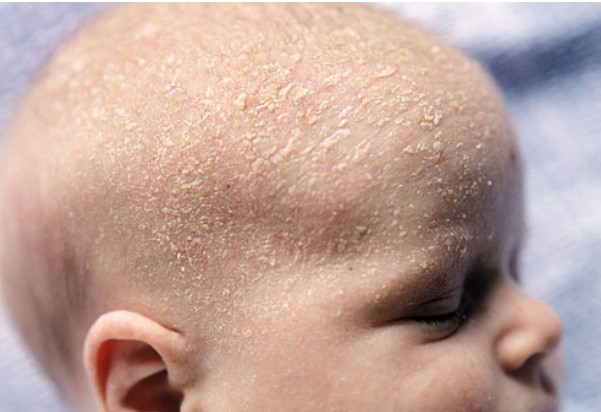Seborrheic dermatitis, also known as cradle cap in infants, is an inflammatory skin condition that causes redness and yellowish, waxy, greasy looking scales on the scalp and body. In infants, it primarily affects the scalp, giving it the colloquial name of “cradle cap”, but can also affect the face, neck, and trunk of babies’ bodies. It is typically asymptomatic and does not tend to bother children except in rare cases. This condition can be concerning to parents due to its unsightliness. It is important to note that, although, it is not aesthetically pleasing, this condition is not typically harmful to children.
WHAT CAUSES SEBORRHEIC DERMATITIS?
The etiology of seborrheic dermatitis is not fully known, but it is theorized that it is caused by excess oil production of the skin and also an overgrowth of the natural yeast on our skin called Malassezia. There is also a familial and possible genetic connection to the condition.
TREATING SEBORRHEIC DERMATITIS
Seborrheic dermatitis is often self-limiting in infants, meaning that it tends to go away on its own. If it does not clear, there are treatments such as Ketoconazole shampoo, topical antifungals, topical steroids, and mineral oil that can be beneficial in clearing the condition. Another treatment option includes using a baby brush to help clear the scaling off of the scalp.



